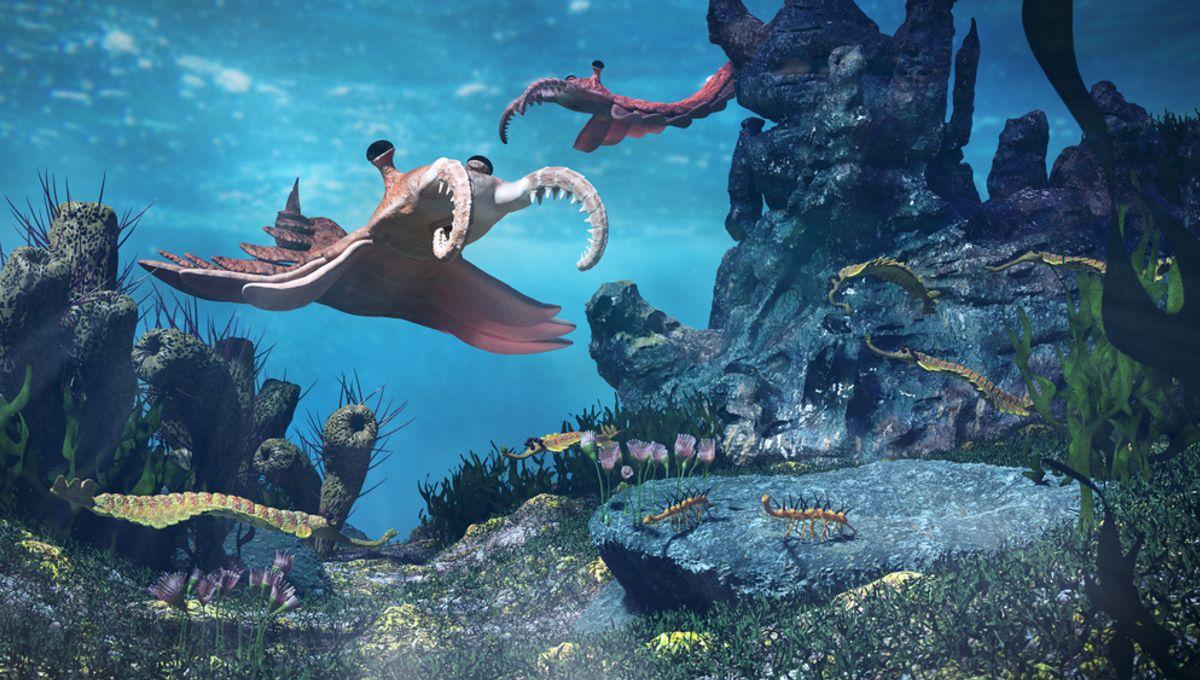We May Have Misjudged A Fundamental Fact About The Cambrian Explosion

We May Have Misjudged A Fundamental Fact About The Cambrian Explosion
The history of life on Earth is not a peaceful one. Rather than a constant upward trajectory of evolution, it’s been billions of years of boom-and-bust cycles – first an explosion of life, and then a mass extinction of all but the most hardy hangers-on. Lather, rinse, repeat.
And it all started – at least, for complex life as we think of it today – with the Cambrian explosion. It was during this period, around 530 million years ago, that basically all animals got their start: the Cambrian explosion is when we see the development of what are now “standard” body plans, and where hard parts like exoskeletons turn up for the first time (stick a pin in that – it’ll be important later). It is, in other words, a major and incredibly important turning point in the evolutionary landscape. So it’s potentially pretty embarrassing, all things considered, that we may have misjudged its timing by, oh, 15 million years or so. And yet, that’s precisely what a new analysis has concluded. “Our study indicates that organisms with slender body profiles prospered around 545 [million years ago],” the authors write – placing their findings firmly beyond the accepted beginning of the Cambrian explosion. “They likely had slender, coelomic hydrostatic bodies with an [anteroposterior] axis, muscles, and possibly segmentation,” they explain. “These organisms could perform directional locomotion and likely had sensory capabilities […] Such adaptations in body profile and mobility allowed these early animals to thrive within increasingly dynamic and complex environments[.]” “These findings all point to a precursor to the Fortunian Diversification Event and a deeper evolutionary origin for the Cambrian Explosion,” the authors state. It sounds like a big claim – so what’s the evidence? Well, here’s the thing: most palaeontological studies of this period have concentrated on the fossil record left by organisms with hard parts (told you it’d be important). It’s an understandable choice: hard parts are just far more abundant in the fossil record than soft parts, because they survive better. But concentrating on things like bones and exoskeletons means you miss anything that simply didn’t have those features. To find those, you have to look at what’s called the trace fossil record – fossils not of the organisms themselves, but of the marks they left on the world. Helminthopsis ichnosp.; a trace fossil from the Logan Formation (Lower Carboniferous) of Wooster, Ohio. Image credit: Wilson44691 at English Wikipedia, Public domain, via Wikimedia Commons “The trace fossil record provides valuable information about evolutionary periods when soft-bodied fauna were dominant,” explained Olmo Miguez Salas, a postdoctoral researcher at the Department of Earth and Ocean Dynamics of the University of Barcelona, and one of the two authors of the new study. “Fossil traces reflect the behavior of the organism that generates them, which is determined by habitat and responses to environmental stimuli,” he said in a statement this week. “Therefore, they are an indicator of the palaeoecological conditions in which the organisms that generated them lived.” And it turns out these trace fossils – particularly the ones from the transition out of the Ediacaran period and into the Cambrian – have a lot to say. “The Ediacaran fauna was dominated by complex, multicellular soft-bodied organisms,” explained Miguez Salas, much of which were lost forever in the Cambrian. The few that did survive left trace fossils that seemed to suggest very simple organisms – or, at least, didn’t seem to suggest particularly complex ones. It's that idea, though, that the new study challenges. By taking a new look at the trajectories left by those soft-bodied organisms, and comparing their various ratios and patterns with those seen by modern animals, the researchers realized they were looking at complex creatures – things that could potentially have been the first sparks of the Cambrian explosion. It’s a neat finding – not only for what it tells us about the timeline of the Cambrian explosion, but also for its applicability to other periods. Fittingly, it’s a technique that can evolve with use. “The scaling laws obtained in this study enable the study of the morphological evolution of different faunal phyla generating fossil locomotion traces,” Miguez Salas said, “not only during this evolutionary period, but also during other evolutionary periods of similar importance, such as the great diversification event of the Ordovician.” “This new discovery opens the door to quantitatively study future Ediacara trace fossils discovered in the coming years,” he concluded, “and to corroborate that the Cambrian explosion did not happen in the Cambrian, but many millions of years earlier.” The study is published in the journal Geology.


